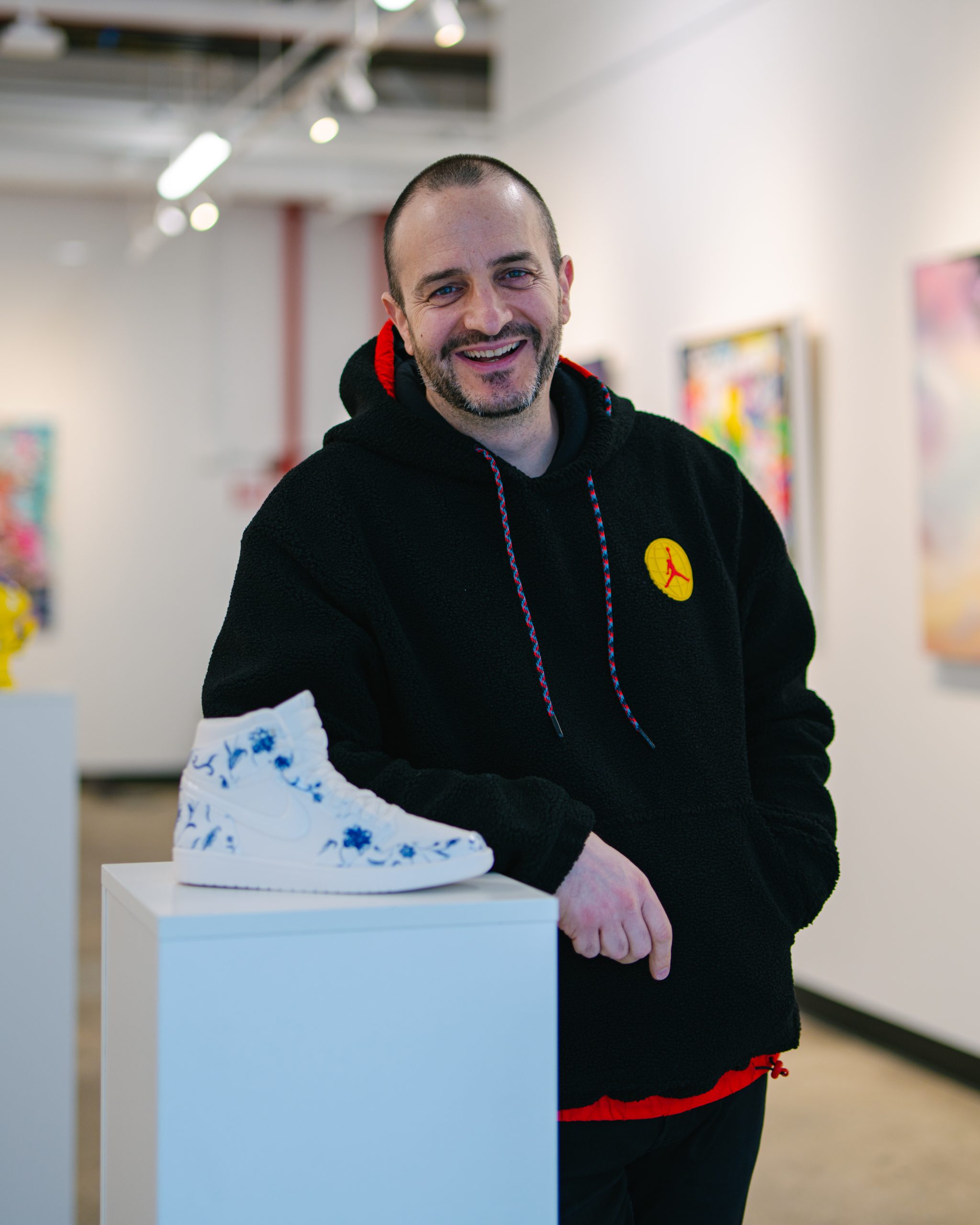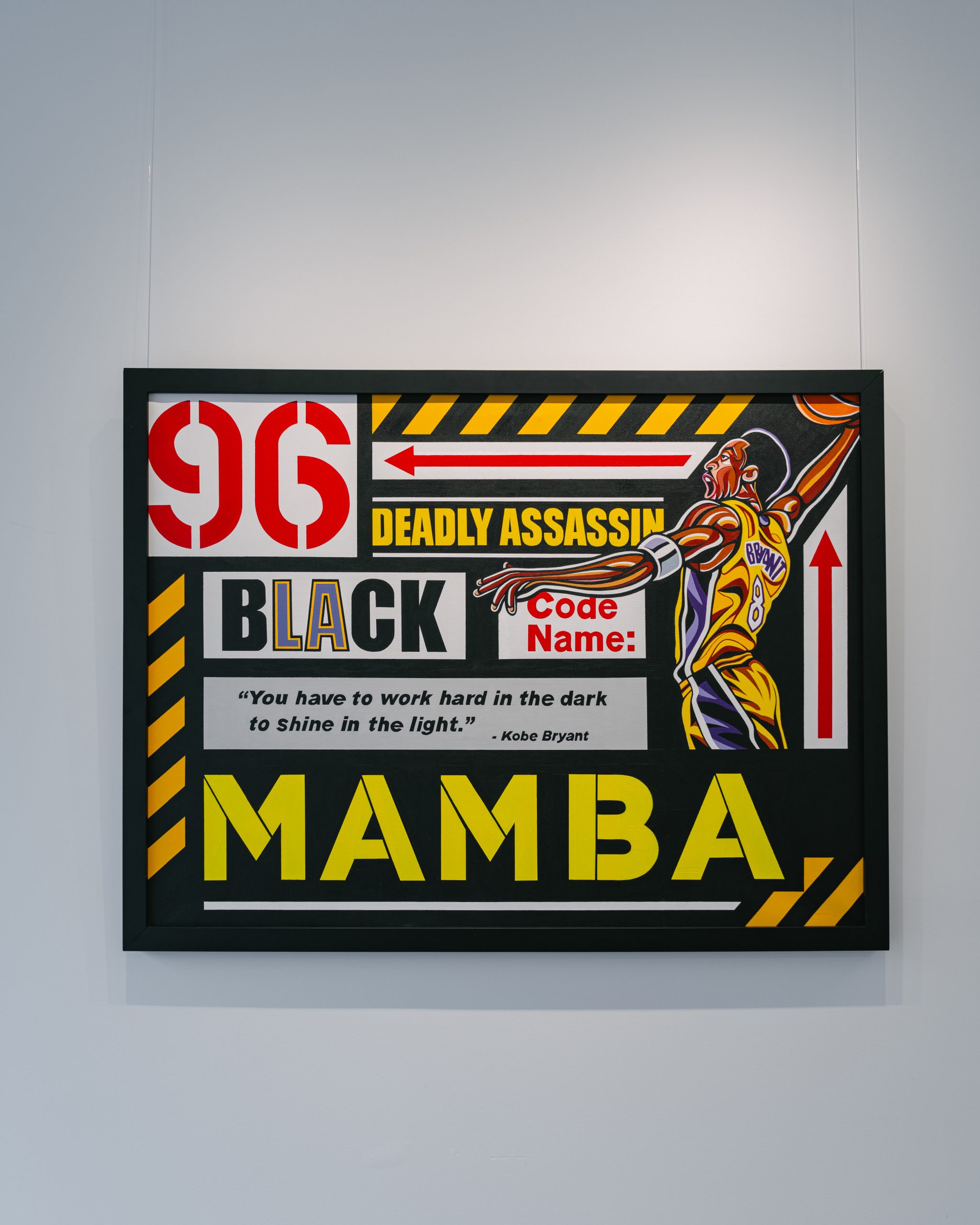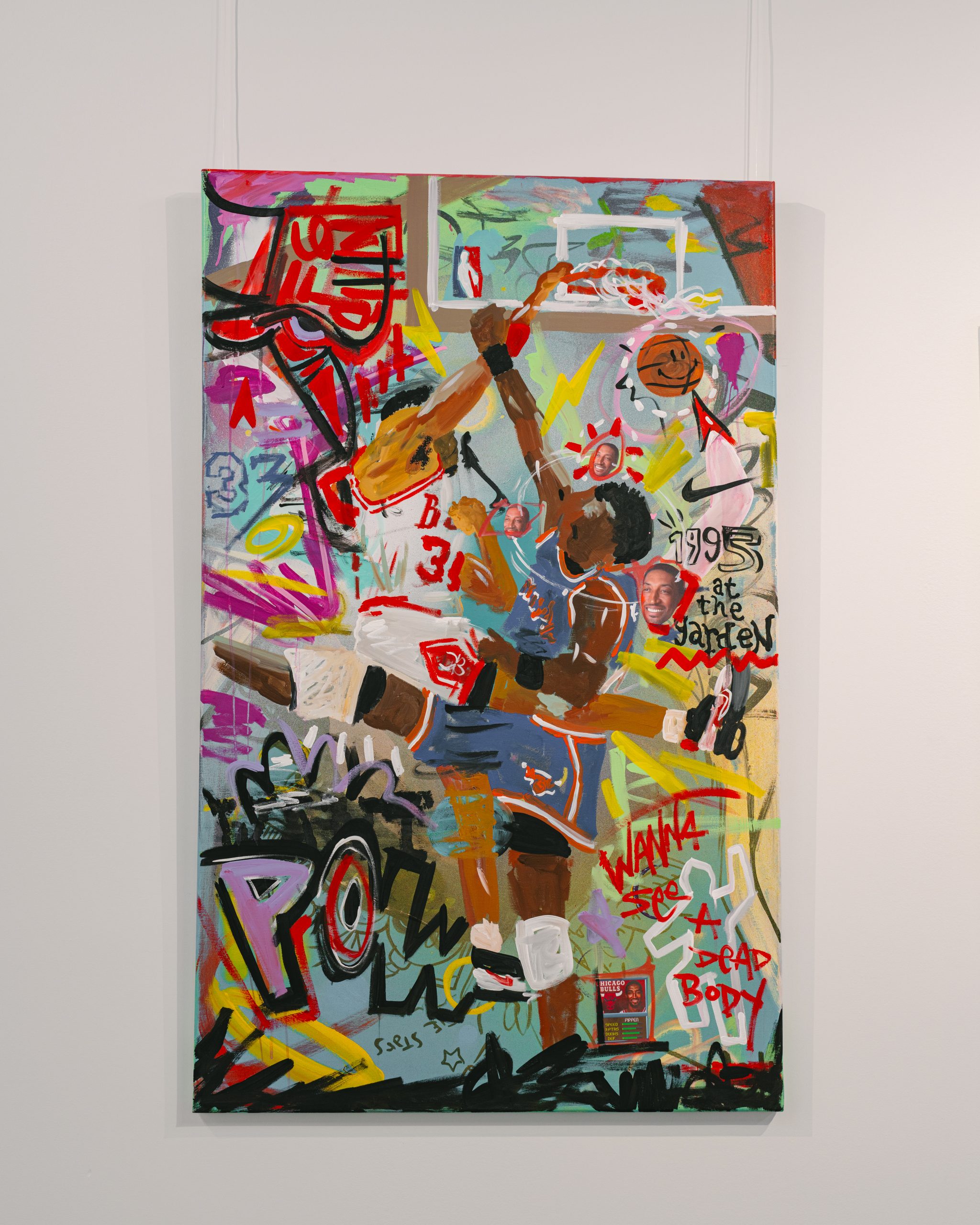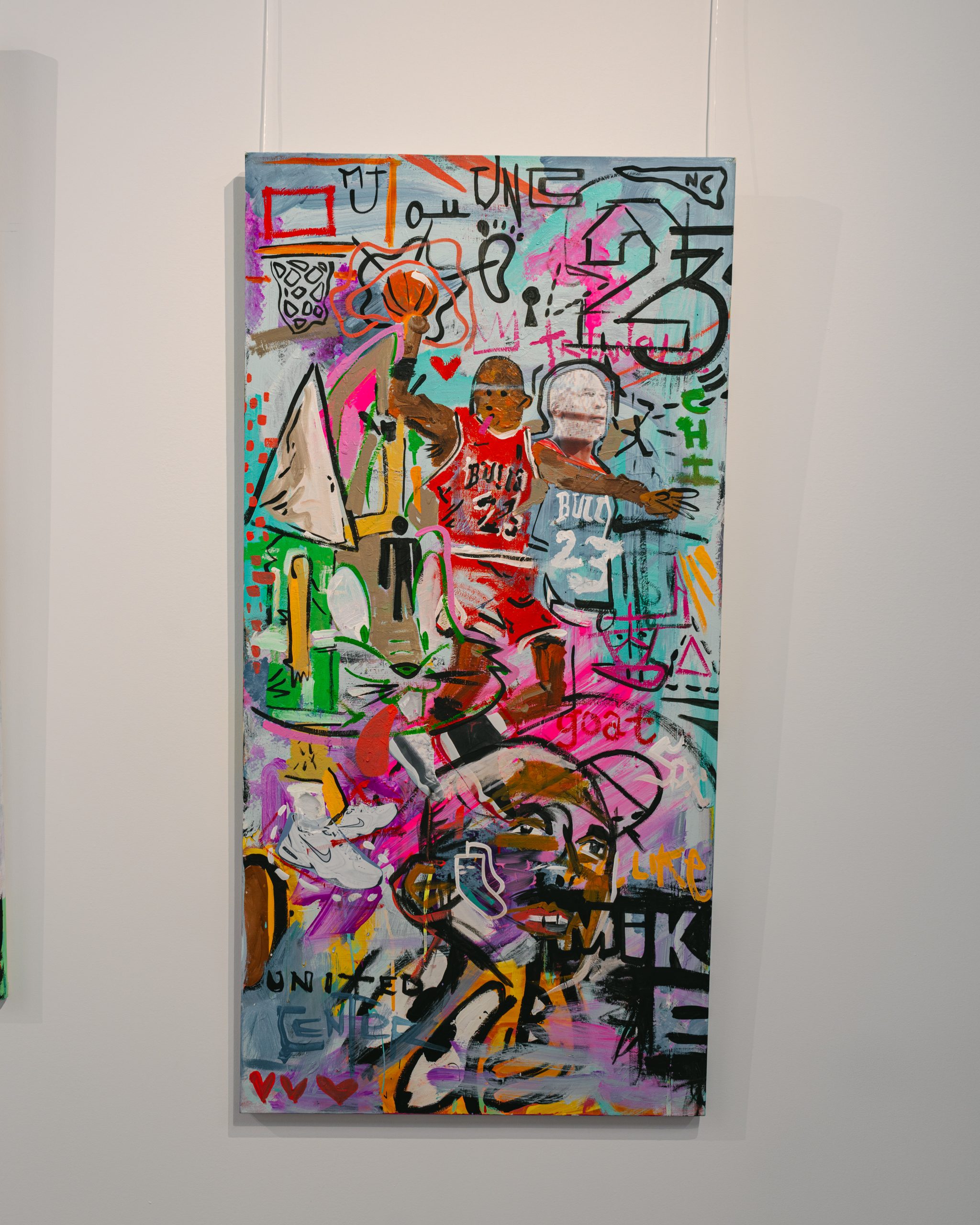Last October, SLAM teamed up with The Local Gallery for a partnership like we’ve never seen before. The result: SLAM presents The Local Gallery New York, the first permanent art gallery in the world dedicated solely to basketball, where the art is always inspired by the game. We just launched “AND ONE,” our third group show which features 17 pieces of original art by 12 artists.
Check out the new catalogue, here.
Pepe Bratanov, also known by his artistic moniker Peppy Colours, is a Toronto-based visual artist and curator of The Local Gallery New York. His work has garnered numerous awards and recognition internationally. We recently sat down to discuss his love and passion for basketball-inspired art, how the partnership between The Local Gallery and SLAM came to be, investing in art, art gallery misconceptions and more.

This interview has been slightly edited for conciseness and clarity.
Curtis: The partnership between The Local Gallery and SLAM is very unique; can you speak to how it came about?
Pepe: Truly unique. It was born out of mutual love for the game. On a brand level, there was a total alignment, and on a human level even more so. Everyone involved is so passionate about hoops and art. On one hand, you have TLG with a very strong interest in hoop culture and is dedicated to growing and pushing the contemporary art scene. On the other hand, you have SLAM, a brand that needs no introduction, the most authentic voice in basketball storytelling for a very long time. This partnership just made so much sense on so many levels.
Together, we saw an opportunity to carve out a space that hasn’t been fully explored. We’ve seen small things done here and there that try to bring the art and basketball worlds together, but in most cases it’s one-offs, pop-ups, brief celebrations of the game, but nothing as committed and dedicated to basketball and hoop culture as what we’re building. And where we’re building it. We’ve entered New York City, the biggest art market in the world with 1,500 or so galleries. It’s saturated, so we couldn’t just be another gallery. We needed to find a niche. We needed to do something differently. And we did. We launched the first gallery in the commercial art world entirely dedicated to basketball and hoop culture all year round.

Curtis: What is it about basketball and its culture that makes it possible to have an entire art gallery solely dedicated to art inspired by the game?
Pepe: I think the key here, as you said, is in its culture. The sport itself is beautiful and extremely entertaining, but it’s the culture that makes it so special and sets it apart from other sports. There’s so much that surrounds the game–the sneakers, the fashion, the music, the video games, the entertainment, the diversity and inclusivity. There’s a lot of trend-setting. Hoop culture is pop culture. And pop culture has always played a big part in influencing the art scene. Art is about expression. It comes from the artist’s sad or happy place. It’s often a reflection of culture, popular or not, and the current state of our society. And when basketball and basketball culture touch so many aspects of our lives, it’s easy for it to make its way into art. You could even say it’s inevitable.
I think when we were starting this a lot of people expected that we’d be showing portraits of basketball players. And we do show some portraits occasionally when they’re done in a really interesting way, but it’s so much more than that and honestly, it’s all the other stuff we show at the gallery that gets people excited about what we do. Whether it’s an artist applying old Japanese pottery techniques to porcelain sneakers and basketballs, art made with sprinkles or textiles, or portraits made with vintage Jordans, the diversity and unexpected nature of the work is what draws people in. We’ve had people who are not even into basketball visit the gallery and fall in love with what we do.
And on top of it all, I think we’re experiencing a bit of a renaissance when it comes to the growth of basketball and everything that surrounds it. It just seemed like the right time. We had all the right ingredients to create something special.


Curtis: As a curator, and artist yourself, what draws you into basketball-inspired art?
Pepe: The diversity and fresh takes. It’s 2024; everything looks like something else. It’s hard to create something that’s truly original, if not impossible. But I continue to see things that are done in an interesting way, things I think people will connect with on an emotional level. And creativity–I always look for creativity in the work. Having talent is important, but nothing beats creativity and fresh thinking.
And to go full circle, of course, the culture. Basketball is so rich in culture and it’s what allows the creation of all this diverse work. Side note, I’m obsessed with soccer. I watch it and play it religiously. Growing up in Europe, soccer was all I knew. But when it comes to art, I was never able to find inspiration in it outside of the game I’m watching or playing.With basketball it’s a whole different thing. It’s got a special place in my heart even though I adopted it later in my life, not until the early 90s when the NBA and Jordan’s Bulls were introduced in Europe in a more prominent way.
Curtis: We’ve heard people like Rich Paul urge athletes to invest in art; what’s your take on art as an investment?
Pepe: When it comes to art, I think for me the most important thing is you need to connect with the piece you’re acquiring. Have that special connection with the art and the artist. You’re going to wake up next to this piece every day. It needs to mean something to you. It needs to trigger something in you. One look at it may turn a bad day into a good one.
So I’d say if you’re making the investment, make it an emotional one. If it happens that the artist is on the rise and the value of the work will double in a year or two, all the better. It’s a win-win. But the work must mean something to you. Leave the rest to us. We’re always on the lookout for emerging talent that we believe is on the rise in hopes to help make your emotional investment a financially sound one, too.

Curtis: There’s a huge misconception about the relationships between artists and galleries. Again, leaning on your experience as both a curator and artist, can you speak to the role of art galleries in 2024 and why they’re maybe more necessary in today’s climate, contrary to popular belief? Especially with people having more access than ever before with the advent of the internet and social media.
Pepe: For artists, the biggest thing is validation. It’s in our nature as human beings. We need it, we seek it. There’s a reason why the movie industry has the Oscars, athletes have the Olympics and so on. Pretty much every industry and sector has its own way of recognizing the cream of the crop. Love it or hate it. It’s in us.
There are millions of artists out there and only so many galleries. Getting into a gallery helps propel the artist’s career. If you love a certain artist and their work, I strongly encourage you to buy their work from the gallery they’re showing in. It gives them an immense sense of pride. Especially when the artists next to them may not be able to sell. When you from the artists directly, you’ll help them pay one of their bills for the month; buy their art from the gallery they’re showing in and you’ll be helping them build their career.


Curtis: Looking ahead, what do you envision The Local Gallery NYC adding to the grand scheme of the art community?
Pepe: Freshness, creativity, diversity and inclusivity. We are new and unburdened by some of the old ways of the industry. I believe we have a fresh take on art. We’ll always look for and support creativity. And just like the sport itself, it’s our mission to have a space that is inclusive and supports diversity. Oftentimes, I see people passing by our doors and feeling uneasy, uncertain if they should come in. There’s this misconception attached to art galleries, that they’re not for everyone. And some are indeed not for everyone. This is not us. This is the place for you where you can discover exciting new work, get immersed in creativity and leave inspired by the sport, its culture and the art that meshes it all into one.
Pull up and check out the gallery at 43-42 12th St, Queens, NY 11101.
Photos by Marcus Stevens
The post Hoops, Rap and Everything Black: Meet the Curator Behind The Local Gallery NYC, SLAM’s New Art Gallery appeared first on SLAM.


